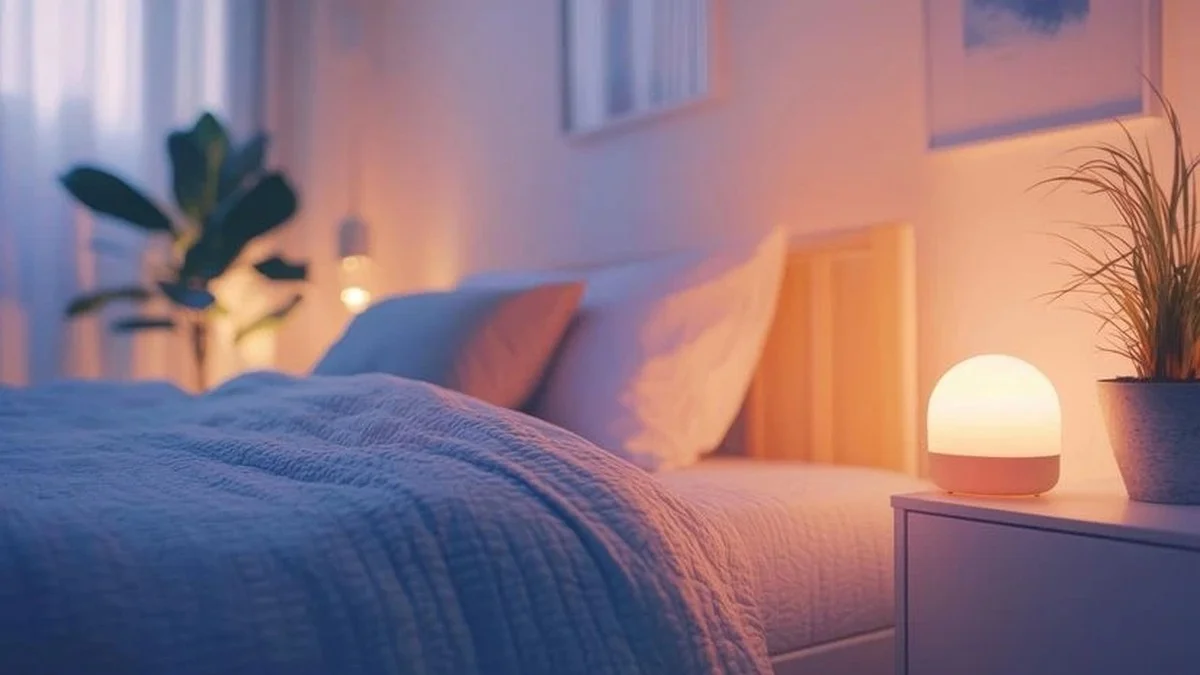29/10/2025
29/10/2025

NEW YORK, Oct 29: Sleeping with the lights on might do more than just disrupt rest — it could also increase the risk of heart disease, the world’s leading cause of death, according to new research.
A study published Thursday in JAMA Network Open found that people who slept in the brightest environments — similar to having overhead bedroom lights on — had a 56% higher risk of heart failure, a 32% higher risk of coronary artery disease, and a 28% higher risk of stroke compared with those who slept in total darkness.
Researchers used wrist-worn devices to track light exposure between 12:30 a.m. and 6 a.m., said Dr. Daniel Windred, co–first author of the study and a research associate at Flinders University’s College of Medicine and Public Health in Australia.
“One limitation is that we do not know the sources of personal light exposure, only the intensity,” Windred noted. “Understanding typical sources of night light exposure might allow for more specific recommendations beyond ‘avoid bright light at night.’”
Exposure to light at night can interfere with the brain’s production of melatonin, the hormone that promotes sleep. To minimize this, experts recommend dimming or turning off lights several hours before bedtime and limiting screen time.
“If turning the lights off isn’t possible, use dim or warm lighting instead of bright overhead lights,” Windred said. Dr. Julio Fernandez-Mendoza, a clinical psychologist and director of behavioral sleep medicine at Penn State Health Sleep Research and Treatment Center, added that blackout curtains or a sleep mask can also help reduce light exposure.
The study’s authors said their analysis represents the largest known investigation into long-term links between individual nighttime light exposure and cardiovascular risk.
“We analyzed about 13 million hours of light data from nearly 89,000 participants,” Windred said. The data supports earlier research showing that disruptions to the body’s circadian rhythm — the internal 24-hour clock regulating sleep, hormones, and metabolism — can negatively affect cardiovascular health.
Participants, averaging 62 years of age, were drawn from the UK Biobank, which tracks the health of more than half a million people aged 40 to 69 across the United Kingdom. They wore light sensors for a week between 2013 and 2022, and their health outcomes were monitored for an average of nine years.
Those exposed to the brightest nighttime light faced a 47% higher risk of heart attack and a 32% higher risk of atrial fibrillation (A-fib), an irregular heart rhythm that can lead to stroke or heart failure. Women were more likely to develop heart failure and coronary artery disease, while younger individuals were at greater risk for heart failure and A-fib.
While the study revealed strong associations, it did not prove that light exposure directly causes cardiovascular problems. “There may be other differences in people exposed to light at night that explain the higher risk of heart disease,” said Dr. Tim Chico, professor of cardiovascular medicine at the University of Sheffield, who was not involved in the study.
However, researchers noted that the findings remained significant even after adjusting for factors such as physical activity, smoking, alcohol use, diet, and shift work. Shorter sleep duration only affected certain outcomes, such as stroke risk.
Interestingly, higher light exposure in the morning appeared beneficial for cardiovascular health, suggesting that balanced light exposure throughout the day is key to maintaining a healthy heart.
Previous studies have shown that disrupted circadian rhythms can impair arterial cell function, raise blood pressure, and promote clot formation — all risk factors for heart attacks and strokes. “The body may respond to nighttime light as a stressor, increasing heart rate, stress hormones, glucose, and inflammation,” Fernandez-Mendoza said.
Two of the study’s authors are cofounders of Circadian Health Innovations, which produces wrist-worn light sensors. However, the company had no role in the research and did not supply the devices used in the study.
Given that 97% of participants were White and that sleep quality and light sources weren’t detailed, the authors emphasized the need for more diverse and long-term studies.
Still, the findings strengthen growing evidence that protecting darkness at night — and ensuring exposure to natural light during the day — may be essential not only for better sleep, but also for heart health.


